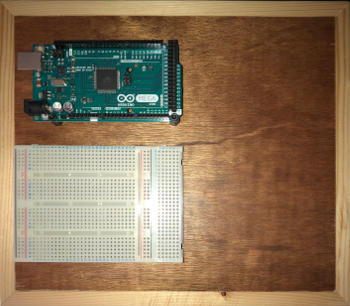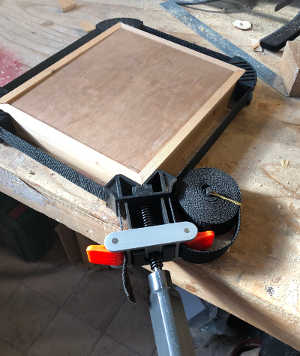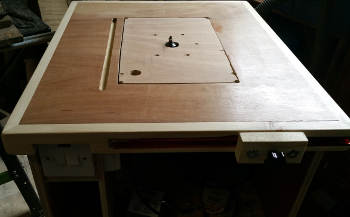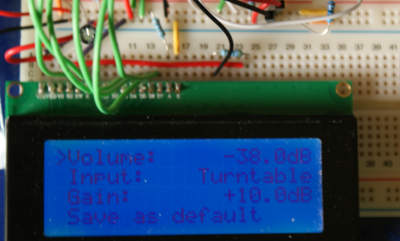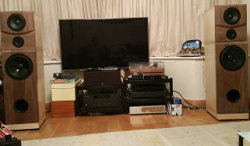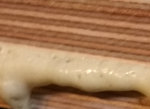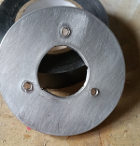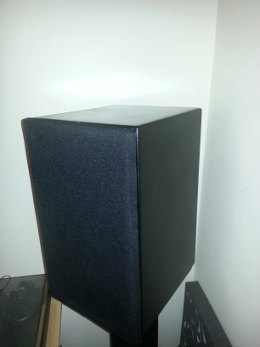Making an arduino board holder from ply & wood
Making a nice case for an Arduino board can range from the simplest possible case, a piece of plywood the right size, with a few holes to mount the board, right through to an intricate box with closing lid etc. This one probably falls in the middle somewhere.
Why another Arduino board holder you ask? Now that my son has taken up the same hobby as me, having started with scratch and a bit of python, he fancies his hand at Arduino. What better reason to build a new case?
Belt clamps - what a find!
While looking through the ScrewFix (UK) website recently, I found this little gem of a tool that I’ve purchased and used a couple of times now (see photo - left). They refer to it as a “belt clamp” so should be easy to track down should you want one too.
This is an amazing little device for its cost and I cannot speak highly enough of it. I get no payback for listing this, I just think that for cabinet construction this tool is absolutely great. In fact I bought a couple of them as I build speakers and other types of cabinet quite frequently.
Hand-built router table for the workshop
Over the years, I’ve done my fair share of wood and metal work, including quite a lot of router work. For some tasks, I think a good router table is really needed, so I’ve took a bit of time out from my other projects to build a good router table.
After much looking around, I came up with a hybrid, based partly on this multipurpose table in a youtube video and party on a book I’ve been reading on kindle Complete Guide to Routers by Lonnie Bird. I’m not going to describe the basics of building the table here, the above youtube video will show you all that you need to know, and if you need more, the above book if very good, and covers usage of the tool too.
Designing a simple PGA2310 based preamplifier with network control
At the moment I am prototyping a high quality pre-amplifier based around the PGA2310 volume control and an op-amp buffer input with RF filtering. Each channel will be selectable by relay, along with gain adjustment for each channel in terms of increase in dB. Each channel will be assigned a name that can be changed easily in software and stored along with default volume and channel in the on-board EEPROM.
Tidy up of my honey badger amplifier
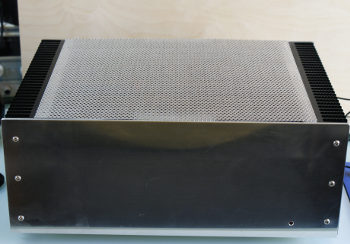
Over the past month or two, I’ve finally fixed up some snags that I had when building the honey badger amplifier. When I first built it, I had a difficult time trying to track down dry joint on one of the start boards - it also had a bad IDC connector delivering power to it.
In addition the PSU boards had a fault and needed to be stripped down and moved to new boards. These two changes along with a general tidy up, are documented here.
Building DIYAudio's honey badger amplifier
Over a couple of years, I slowly built out an amplifier based on the DIYaudio honeybadger design. It was an on/off process where I got one part of it working at a time. Starting by building the channels one at a time on a bench PSU.
This project consists of a single large transformer and dual mono PSU boards with 20K capacitance on each channel, an Arduino based control board with soft start, overload protection and DC protection. For this I used an existing design: 21st century protection board.
Building a pair of Troels Gravesen"s Jensen ER speakers
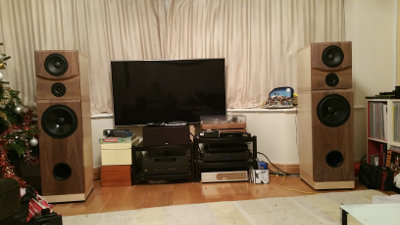
Source site fully documenting the build: http://www.troelsgravesen.dk/Jenzen-SEAS-ER.htm
A couple of months ago I built a pair of Jensen ER speakers from Troels Gravesen's website linked above. Given my room size I went for the slightly smaller ported design that is 360mm deep. Now both they and I have had chance to break in I'll write a little about them. In my case usage is about 50-50 audio and AV, and IMHO these speakers are equally at home with both Home Cinema and Music duties. In fact for home cinema, there's really no need for a subwoofer as they go as low as you'd need them to go in most rooms. They produce a very impressive and compelling sound stage in both modes of operation. Dialogue is particularly clear and there's no evidence of excess in any region. Further, the sound is well merged at critical crossover frequencies at all seating positions I've tried in the room.
Polyurethane wood glue for audio equipment.
<img class=" titleimg" alt="pu glue oozing" src="/images/audio/oddsAndEnds/glue-pu-oozing.jpg"/>
Over the past year or so I've pretty much switched from PVA to Polyurethane glue for most tasks. I've discussed this glue with other wood workers and in my favourite hardwood store SL Hardwoods of Croydon and all seem to agree it is a strong glue.
To me it has one very large advantage for audio equipment over PVA; which is that it expands to fill any gaps. So if the two pieces of wood being stuck together have any imperfections that could allow air through the glue will seal it. See the picture below for how the glue expands enough to ooze out of the sides of a joint. However, unlike normal wood glues, it does not stain and can be sanded out. As this glue expands while curing, it is important that the work is well clamped or held under tension while setting. See the example image or the you tube video linked below.
Simple cheap as chips turntable VTA spacer.
<img class=" titleimg" alt="vta adjustment" src="/images/audio/oddsAndEnds/vta-adjustment.jpg"/>
This is probably one of the cheapest things that you can make, and needs just a jigsaw with a metal blade and drill in order to make it. VTA adjusters just extends the height of the arm by a few milimeters and they just need to be made of a solid enough material to ensure the arm mounting is completely firm and has no play whatsoever.
Building a pair of Seas Mimir design speakers.
 For some time now, I've been running a pair of high quality bookshelf speakers based on the Seas Mimir design. Apparently, they are named after the Nordic god of Wisdom and Knowledge, I cannot disagree and with each listening I like them more and more. I've run them off both Roksan and Arcam amplification and I've really liked the sound from each.
For some time now, I've been running a pair of high quality bookshelf speakers based on the Seas Mimir design. Apparently, they are named after the Nordic god of Wisdom and Knowledge, I cannot disagree and with each listening I like them more and more. I've run them off both Roksan and Arcam amplification and I've really liked the sound from each.
Many people think that when building speakers, the most important thing is the drive unit, but there are many concerns: the quality of the crossovers, the cabinet construction and the stuffing used. Moreover, the stands they sit on and the position in the room that they are placed play a huge role too. In addition to this, the acoustics of the room play further into the equation. Over the parts of this article, I'll discuss the choices I made and my rationale for those choices.
